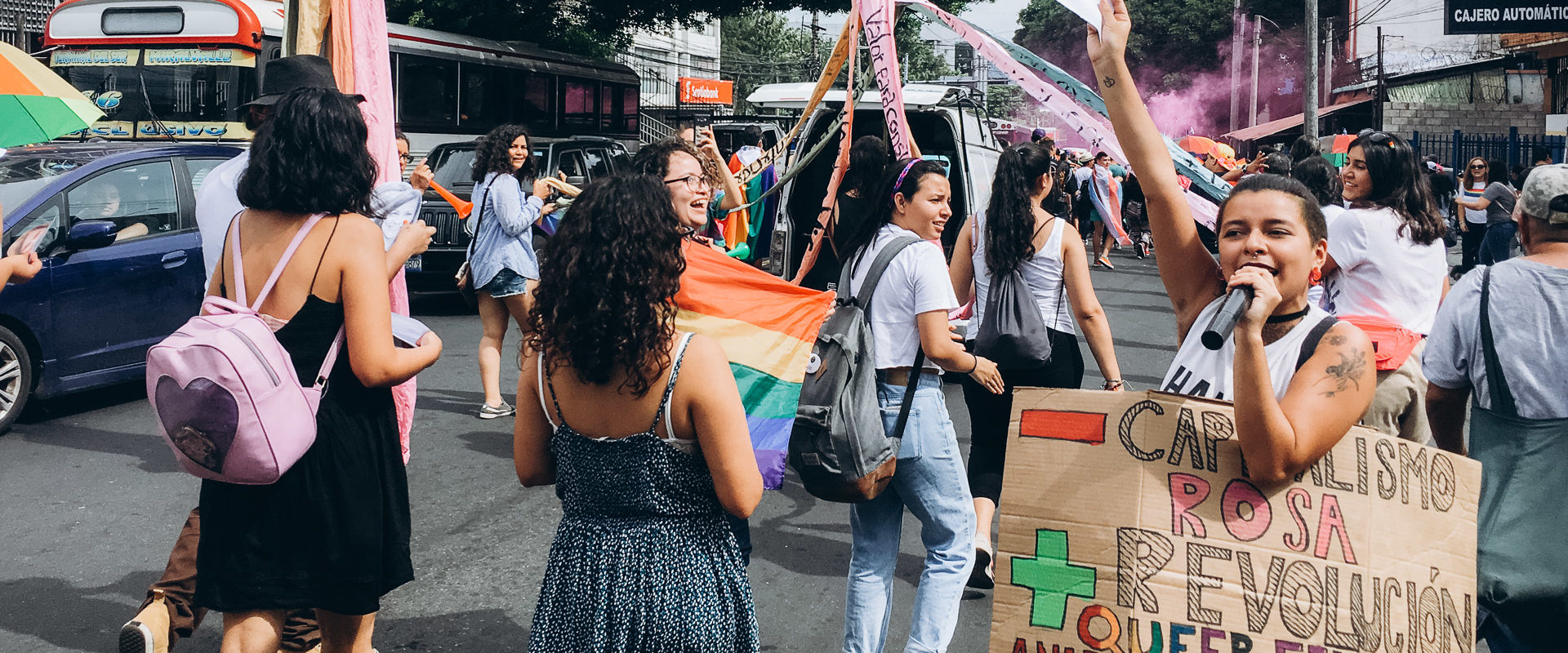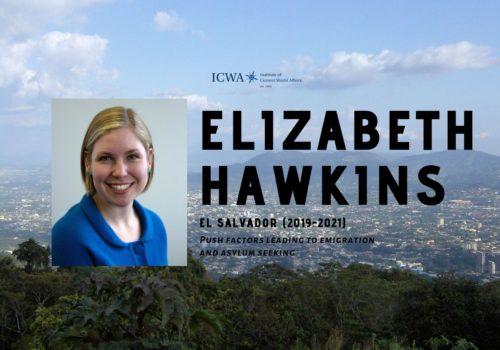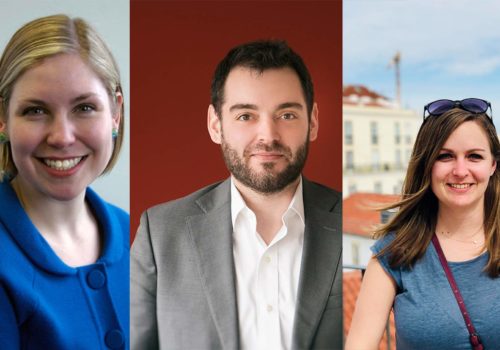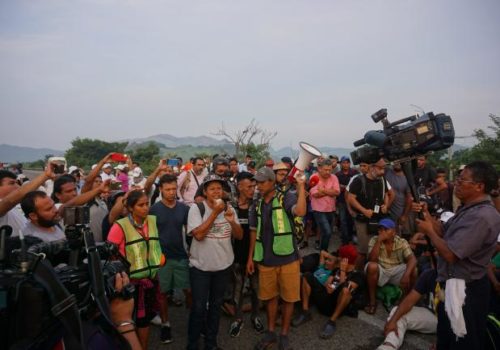SAN SALVADOR — Nearly every day, on my way into the city center, I drive past the Monumento al Hermano Lejano: the “Monument to the Far-Away Brother.” The tall blue arch towers over the highway, displaying a blue and white Salvadoran flag that reads “Welcome Home Brother.” The structure is one of many daily reminders that nearly 20 percent of Salvadoran citizens live outside the country, predominantly in the United States.
Here in El Salvador’s capital, grocery store checkout stands and ATMs include options for cashing remittances sent from family members abroad. Newspapers contain daily coverage of President Trump’s latest immigration policy changes. The tragic deaths of Oscar and Valeria Martinez, who drowned while trying to cross the Rio Grande in late June, dominated the news for over a week. I followed the discovery of the bodies, their repatriation and coverage of their funeral, and it was hard not to imagine my own clients in their place.
As an immigration attorney, I spent almost a decade representing far-away brothers and sisters like Oscar and Valeria, defending their right to stay in the United States. Shortly after graduating from law school in 2010, I started a law practice in Seattle dedicated to humanitarian immigration. My particular focus was on gender-based violence such as domestic and sexual abuse, human trafficking and persecution on account of sexual orientation.
The stories I heard were the experiences of those who had migrated, and everything I learned about Central America was filtered through the lens of having to demonstrate to the American authorities the hardships my clients and their families would suffer if forced to return to the places they were born, as well as the persecution that had driven them from their homes. Over the next two years, I aim to deepen that knowledge with firsthand experience as well as the perspectives of those who stay behind, those who return and those still considering whether to make the dangerous journey to the United States.
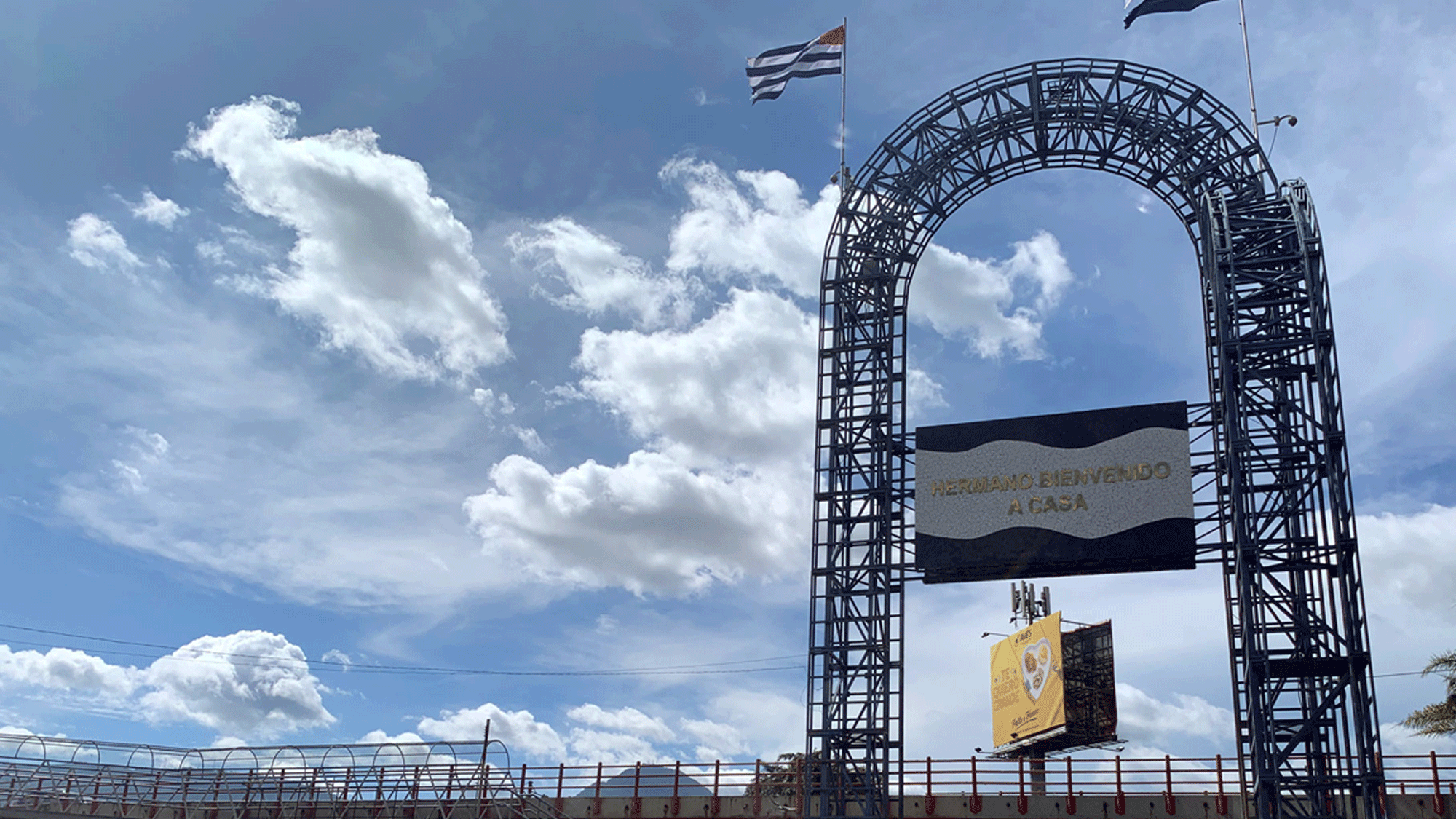
New generation?
El Salvador has one of the world’s highest murder rates. But when I told my clients I was leaving my practice to spend two years in the country, very few expressed any concern for me. As a white foreign professional with access to secure housing and transportation, I don’t face the same risks as they would, although security is still a constant consideration.
Instead, they mostly told me how much they longed to be able to return themselves, if only if it were safer, if only there were opportunities. I received many recommendations about beautiful places to visit (The beach! The mountains! Be sure to eat lots of pupusas!). Some told me they hoped we would not see each other in El Salvador (a sentiment with which I heartily agreed). And several told me enthusiastically that now was an exciting time to go and learn about their country because “we have this new president and he is going to change things.”
Nayib Bukele, the ponytailed former mayor of San Salvador who recently celebrated his 38th birthday, was inaugurated as president on June 1, just two weeks before my arrival. Since the signing of the Chapultepec Peace Accords in 1992, which ended more than a decade of civil war, Salvadoran politics have been dominated by two political parties that have institutionalized the formerly armed conflict. Most of the postwar violence has been blamed on warring street gangs that expanded to include transnational criminal activity after being exported from the United States in the 1990s: the Mara Salvatrucha (MS-13) and the 18th Street (which has since split into two factions, the Revolutionaries and the Southerners).
Bukele is the first president to be affiliated with a third party and many hope he epitomizes a new generation of leadership after decades of polarization and open corruption. Often called the “millennial president,” he is active on social media and has announced many of his policy decisions via Twitter. He has already made significant changes to government institutions, such as eliminating the Ministry of Transparency. The Ministry of Planning has also been dismantled and replaced with a “Ministry of Innovation.”
The Office of the President is rolling out a new national security policy called the “Plan for Territorial Control” in response to the majority’s dominant concerns about gang-related crime. The new plan appears to enjoy broad popular support. A young man who lives in Soyapango, a suburb with high levels of gang violence, told me that “Nayib is the first one with the cojones to really take on the gangs.” But human rights advocates have voiced concerns about escalating repression, military deployment in marginalized communities and worsening of prison conditions.
Different realities
News coverage of Central America in the international press often makes it seem as if the threat of gang violence is everywhere, but the reality on the ground is much more complex. I have yet to see anyone with visible gang tattoos or wearing the baggy clothing so familiar from pop culture, and the only graffiti I have noticed has been either political or artistic. During my first few weeks in the country, the striking differences between upper-middle-class or wealthier neighborhoods and poorer communities where most gang activity takes place were immediately apparent, and there were other subtler differences I struggled to understand.
Almost every formal business employs at least one visible security guard called a vigilante, sometimes carrying a shotgun, who mostly seems to spend his time directing shoppers to open parking spaces. The less formal businesses—street vendors, neighborhood shops, and hole-in-the-wall pupuserías—and most of the poorer neighborhoods I have visited do not have uniformed guards. I have been told that some of the teenagers standing with their bicycles by the side of the road, dressed as far as I can tell like normal kids, are acting as vigilantes for the gangs, monitoring who comes and goes from the neighborhood.
I wondered what they were doing there on a weekday morning until I saw a cardboard sign taped to the door: Se busca muchachas, mayores de 18 años. ‘Wanted: Girls Over 18.’ I doubted the ones I saw were that old.
Before I arrived at my new home in a neighborhood with mala fama, a “bad reputation,” I learned I would not be able to receive mail there. Even though the house was on a quiet street close to the highway, the post office refused to deliver. Instead, envelopes would be returned to the sender with a red stamp saying Alto Riesgo: “High Risk.” Other services I took for granted, like pizza delivery, were also impossible. Although my housemate assured me she had lived in the house for more than four years without witnessing a single alarming incident, she still warned me not to go too far down the road past where we lived.
The day after my arrival, we decided to move to a middle-class street about ten minutes away. It took some coaxing to convince the moving van to come to our house because of the neighborhood’s reputation, and the company sent two workers on foot to check it out before driving the truck up the street. Like almost every home I have seen in San Salvador, in both rich and poor communities, our new house has a solid brick front wall topped with looping razor wire, an iron garage door and iron bars on the windows. There are few discernible differences between the two neighborhoods, but now we enjoy deliveries from Pizza Hut and regular mail service, and like our neighbors, I leave my car parked on the curb at night without worrying about whether it will be there in the morning.
As I settled into my new home and ventured to different parts of the city, I caught mere glimpses of the difficult lives of Salvadorans who don’t have the same resources I enjoy and tried to make sense of what I saw. Driving into the historic downtown—which has recently undergone a major renovation in the hope of attracting more tourism—I found myself stuck in traffic on a busy side street. Three young women, heavily but tastefully made up, crowded onto a wrought-iron balcony overlooking the pavement. I wondered what they were doing there on a weekday morning until I saw a cardboard sign taped to the door: Se busca muchachas, mayores de 18 años. “Wanted: Girls Over 18.” I doubted the ones I saw were that old.
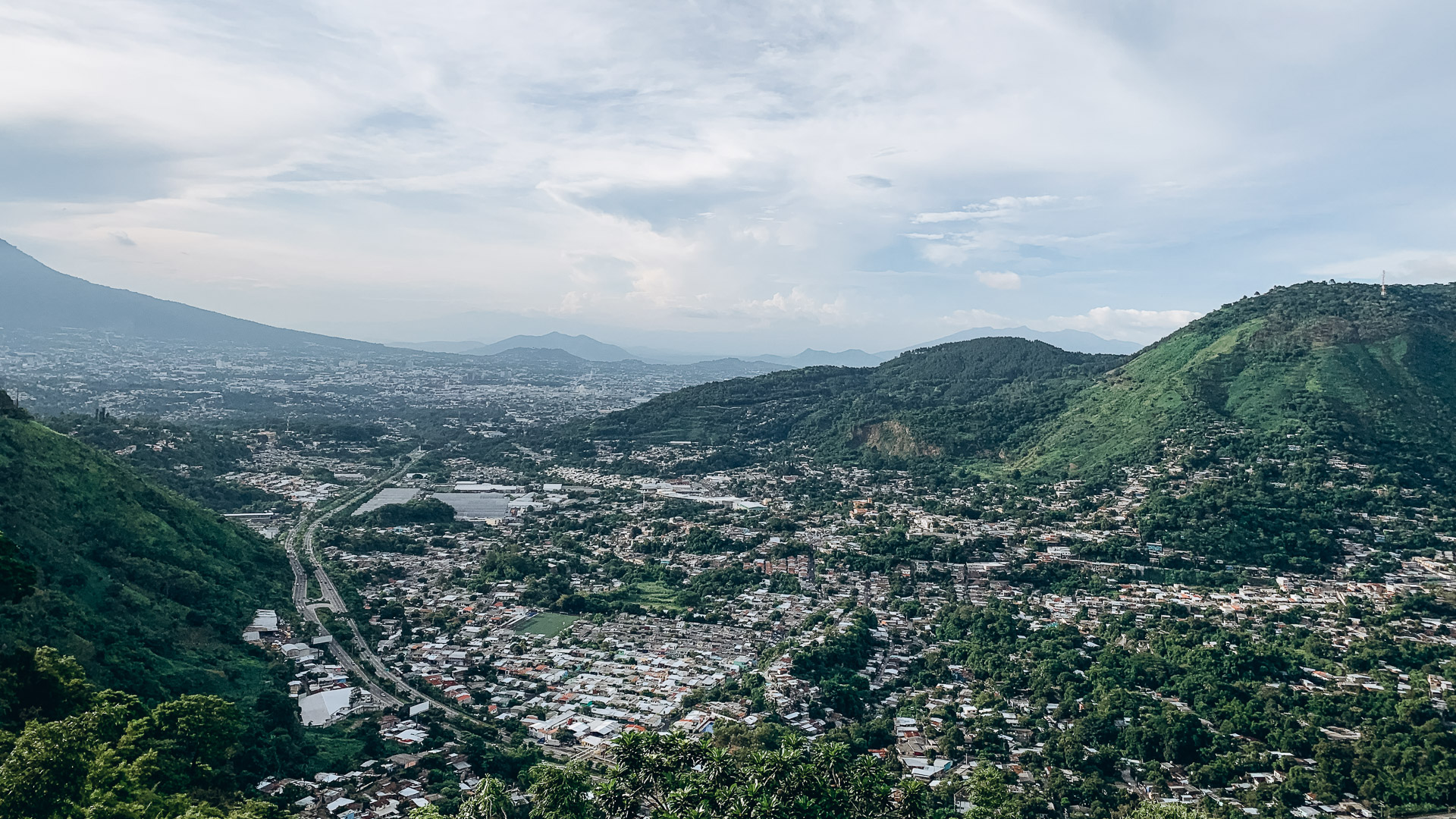
As my car inched forward, I noticed similar signs on other doors. A few blocks away, I parked in a lot beside the cathedral. When I last visited in early 2018, the colonial square was under heavy construction. Now it was pristine and peaceful apart from the nervous presence of masked soldiers in full camouflage loitering outside the cathedral’s steps. A toddler in oversized sunglasses squealed in delight as he chased the pigeons across the clean cobblestones. But I couldn’t stop thinking about those girls, and the soldiers did not inspire the feelings of safety and order they were no doubt meant to provide.
Pride parade
The discrepancy between my subjective experience of safety and the violent reality was reinforced about two weeks after my arrival, when I attended the city’s annual Pride Parade. After having heard and read so much about violence and harassment directed at queer Salvadorans, often at the hands of the police, I wasn’t even sure how safe it would be to attend or whether many people would show up. But I was surprised and moved to see that not only was the event safe and pleasant, but its size and flamboyance rivaled the parades I had attended in my hometown Seattle.
Members of the National Civil Police (PNC), sweating in their patrol caps and body armor, stood expressionless on the sidelines as drag queens processed by. A truckload of militant lesbians and allies calling themselves “The Daughters of Sappho” beat drums and chanted feminist slogans. Families sucking on rainbow popsicles wrapped themselves in rainbow flags and street vendors sold rainbow umbrellas to keep off the hot sun’s rays. A small truck with speakers blasted pop music and the crowd joyously sang along to Lady Gaga and Britney Spears.
Later, an activist led chants protesting El Salvador’s draconian anti-abortion law, which has resulted in the high-profile prosecutions of several poor young women. One of the catchiest slogans, calling out a conservative politician, went: “Julia Regina, get out of my vagina!”
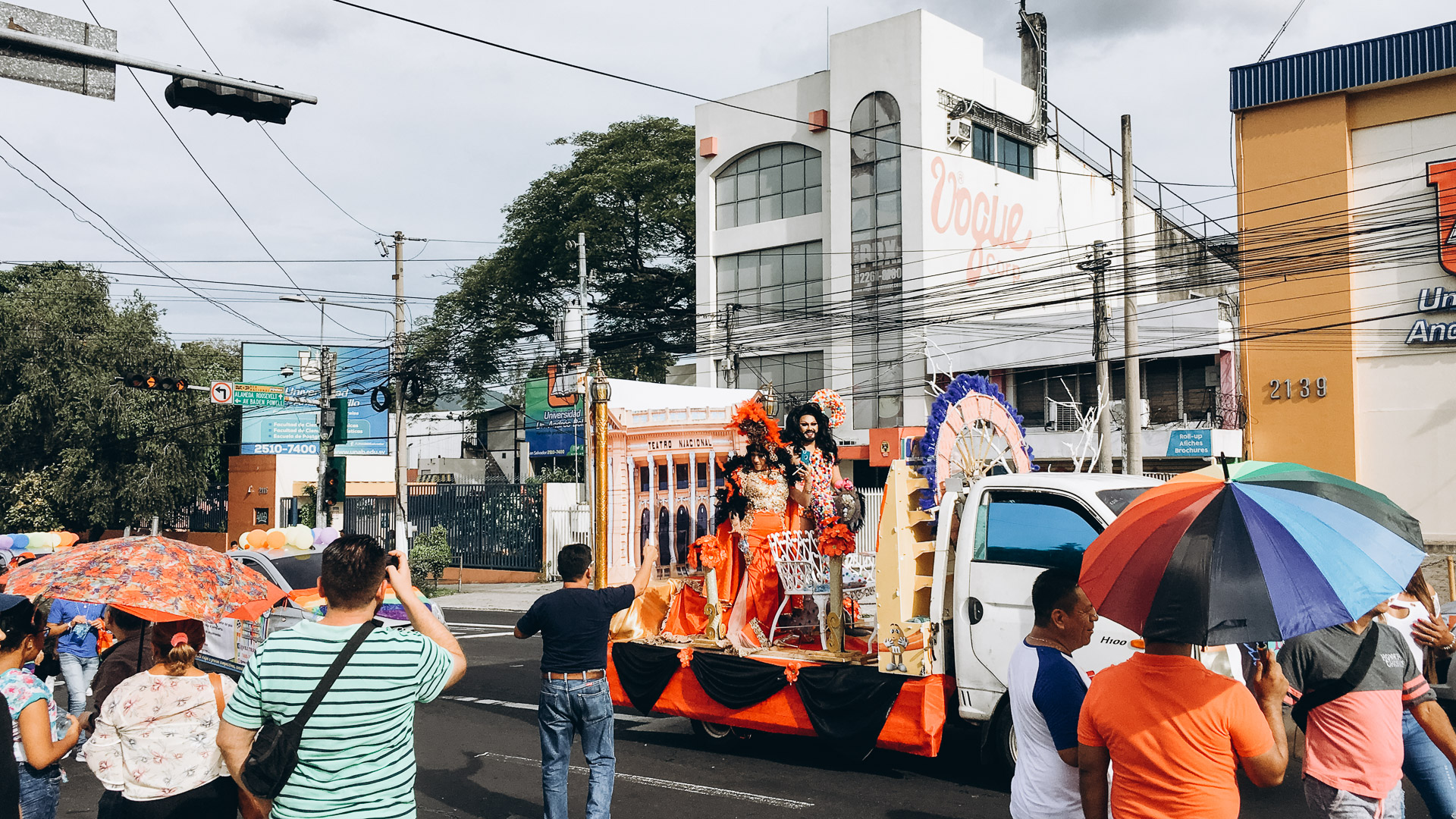
We marched from the national University of El Salvador all the way to the iconic Salvador del Mundo, the Savior of the World, a statue of Jesus atop a giant globe looking down on a packed dance floor. The collective mood was celebratory and defiant. When I commented about how surprised I was by the size of the crowd, a friend said, “This is the biggest it’s ever been. Maybe because of the new president.”
I asked whether he supports LGBT rights.
“I don’t know,” my friend replied, “but you know, he’s young, and it’s kind of like the new generation.”
My optimism was tempered the following week, however, when newspapers reported the arrests of three PNC members in connection with the death of a trans woman named Camila Diaz Córdova. In the early morning of January 31, the three officers had responded to a 911 call and detained her. They allegedly beat her for forty minutes before leaving her for dead in the street. Some reports stated she had been deported after attempting to seek asylum in the United States, a claim the US government denied.
Camila died in the hospital a few days after her attack. It took nearly six months for the officers to be charged, apparently only after persistent advocacy by non-governmental organizations. It remains to be seen whether Camila’s killers will be brought to justice.
The arrests were just one development during a month filled with ideas, issues, personalities and challenges, each of which presents its own possible path for exploration. I look forward to spending the next two years unpacking the factors that lead so many to conclude that the risks of staying in El Salvador outweigh the dangers of migrating.

